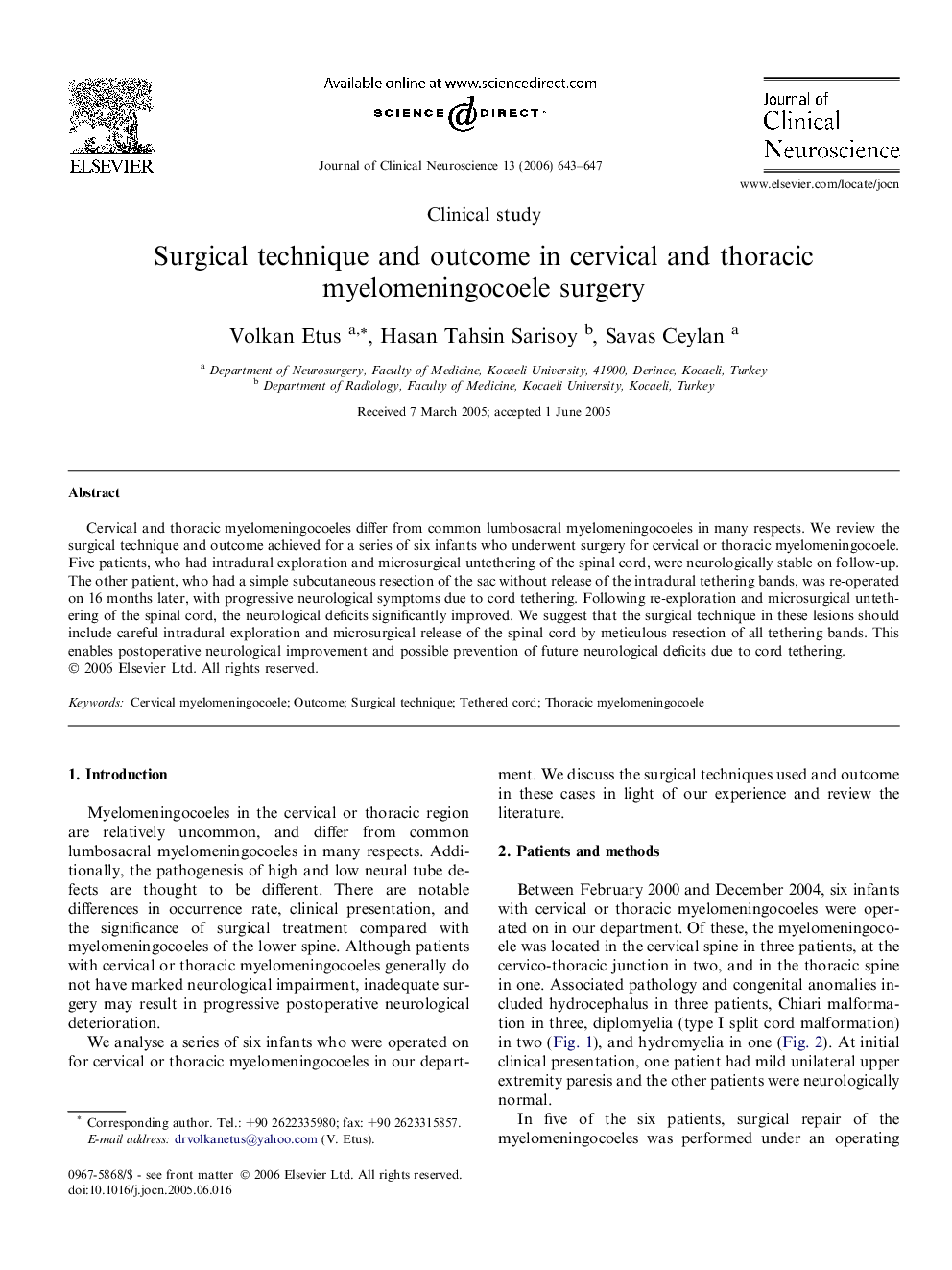| Article ID | Journal | Published Year | Pages | File Type |
|---|---|---|---|---|
| 3063585 | Journal of Clinical Neuroscience | 2006 | 5 Pages |
Cervical and thoracic myelomeningocoeles differ from common lumbosacral myelomeningocoeles in many respects. We review the surgical technique and outcome achieved for a series of six infants who underwent surgery for cervical or thoracic myelomeningocoele. Five patients, who had intradural exploration and microsurgical untethering of the spinal cord, were neurologically stable on follow-up. The other patient, who had a simple subcutaneous resection of the sac without release of the intradural tethering bands, was re-operated on 16 months later, with progressive neurological symptoms due to cord tethering. Following re-exploration and microsurgical untethering of the spinal cord, the neurological deficits significantly improved. We suggest that the surgical technique in these lesions should include careful intradural exploration and microsurgical release of the spinal cord by meticulous resection of all tethering bands. This enables postoperative neurological improvement and possible prevention of future neurological deficits due to cord tethering.
